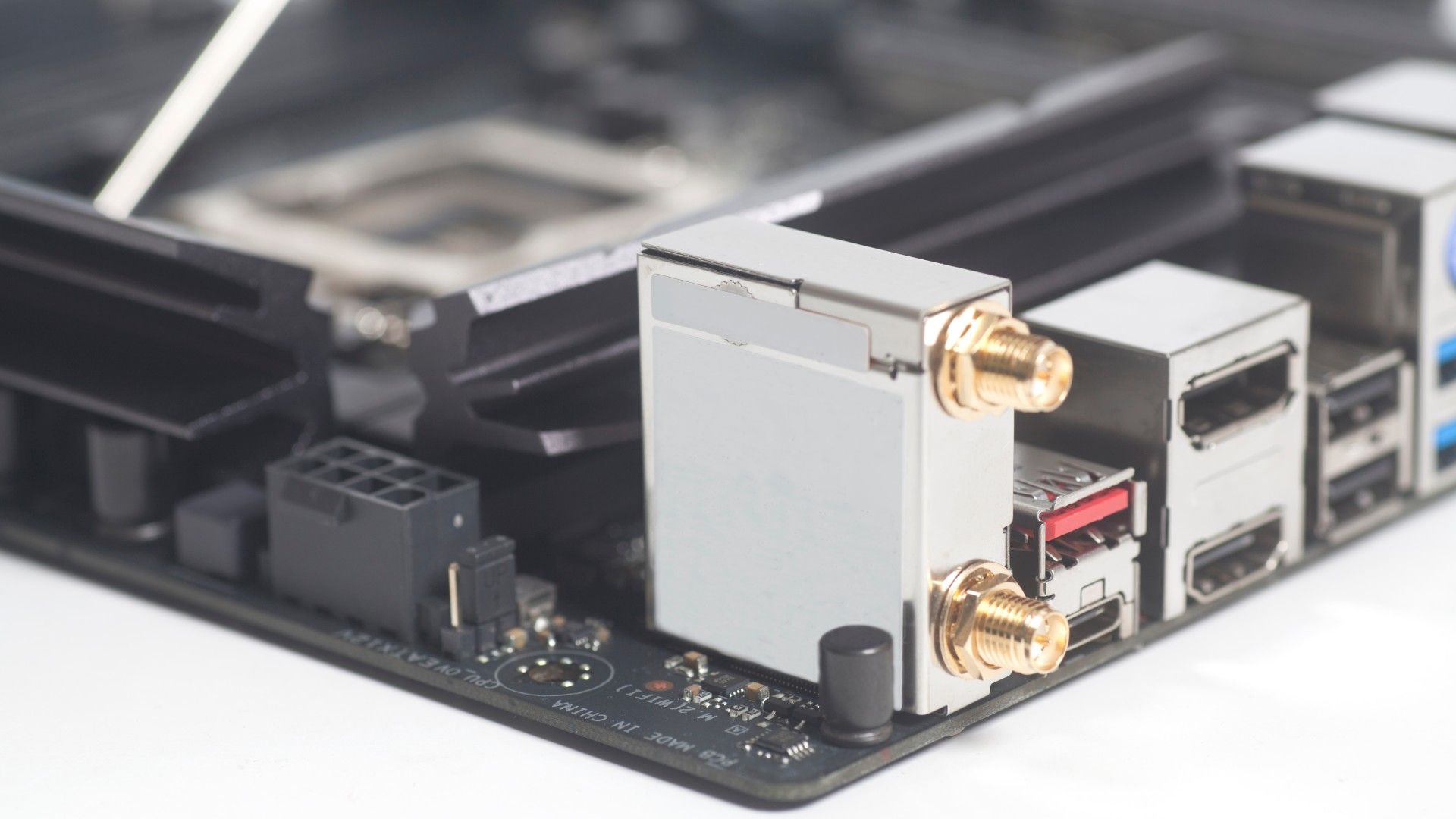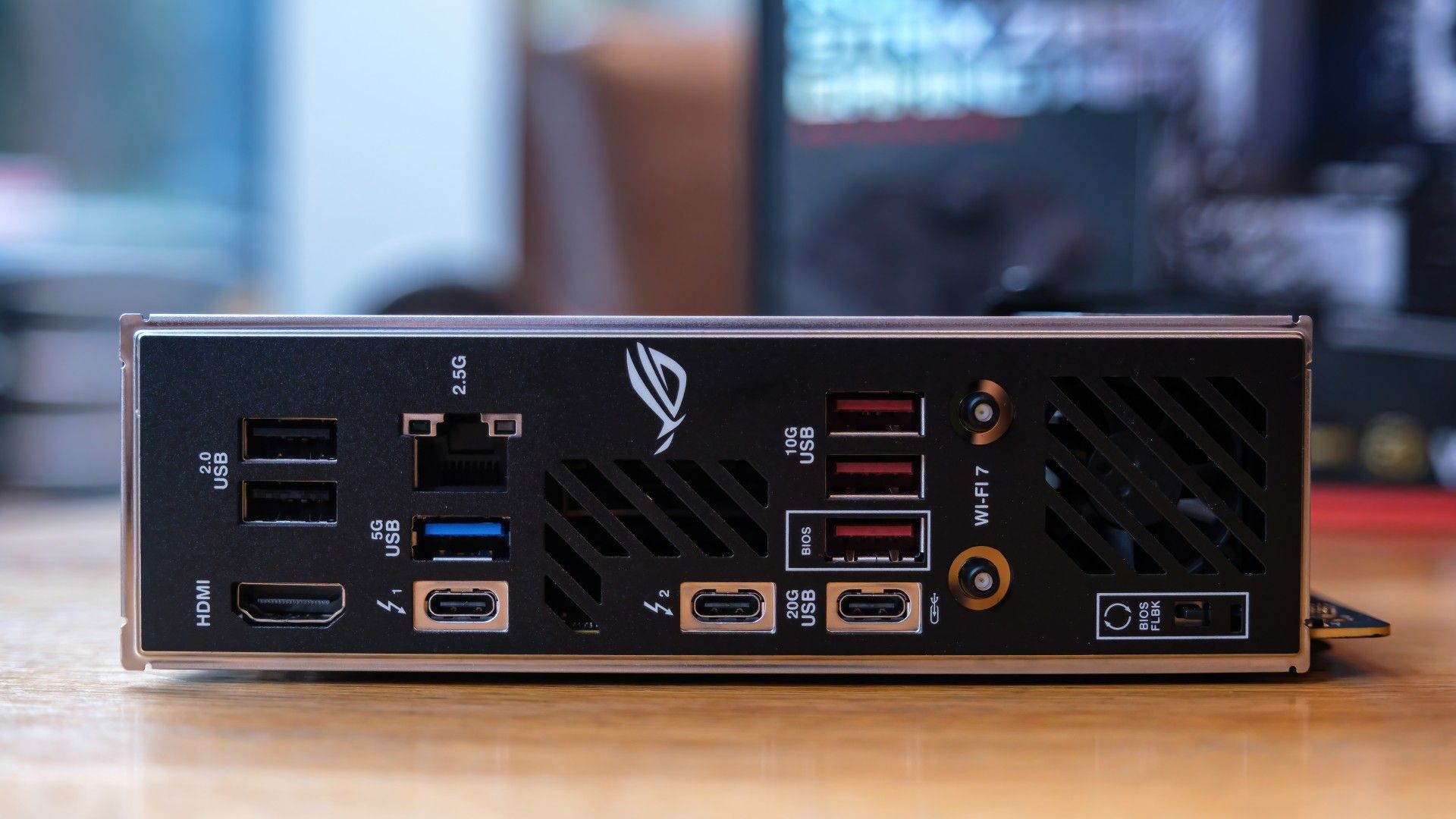Summary
- The usage of M.2 Key-E Wi-Fi cards makes it easy to upgrade your built-in Wi-Fi in the future.
- Built-in Wi-Fi cards run on the motherboard’s chipset, freeing up CPU PCIe lanes for other devices.
- Opt for a motherboard with built-in Wi-Fi if it fits your budget and needs, but add-in cards are still suitable for other situations.
Should you buy a motherboard with built-in Wi-Fi, or just plan to add it later? This is a question many PC builders ask themselves. Here’s why I think you should just go ahead and get a motherboard with built-in Wi-Fi.
What Makes Built-In Wi-Fi Different Today
In the past, the Wi-Fi card on your desktop might have been soldered to the motherboard. This meant that there was no clear upgrade path when Wi-Fi improved. So, it was almost futile to get it built-in way back when.
However, for the last several years, many manufacturers have started to move to an M.2 Key-E Wi-Fi card setup. This is a swappable M.2 card that goes underneath a metal shroud by the I/O shield at the back of the motherboard.
With this advancement, you’ll be able to simply change the Wi-Fi card for another one in the future. Since these Wi-Fi cards run on PCIe, it’s possible that you’ll even be able to upgrade for several generations before having to replace the motherboard.
Benefits of Built-In Wi-Fi Cards
Why should you buy a pre-built PC or a motherboard with a built-in Wi-Fi card? Well, there are several reasons.
Built-in cards are more streamlined because the antenna ports are built into the motherboards I/O shield. This makes it much simpler to hook things up and also keeps the back of your system that much neater.
Being that the Wi-Fi antennas are part of the I/O shield, it also keeps your PCIe slots free from unnecessary add-in cards, which allow you to run additional peripheral devices like a 10GbE network card, graphics card, capture card, or anything else.
Most Wi-Fi cards actually run off your motherboard’s chipset as well, which means it’s not taking PCIe lanes away from the CPU. What does this mean in the real world? Well, your CPU’s PCIe lanes are what run (most) M.2 storage as well as your graphics card.
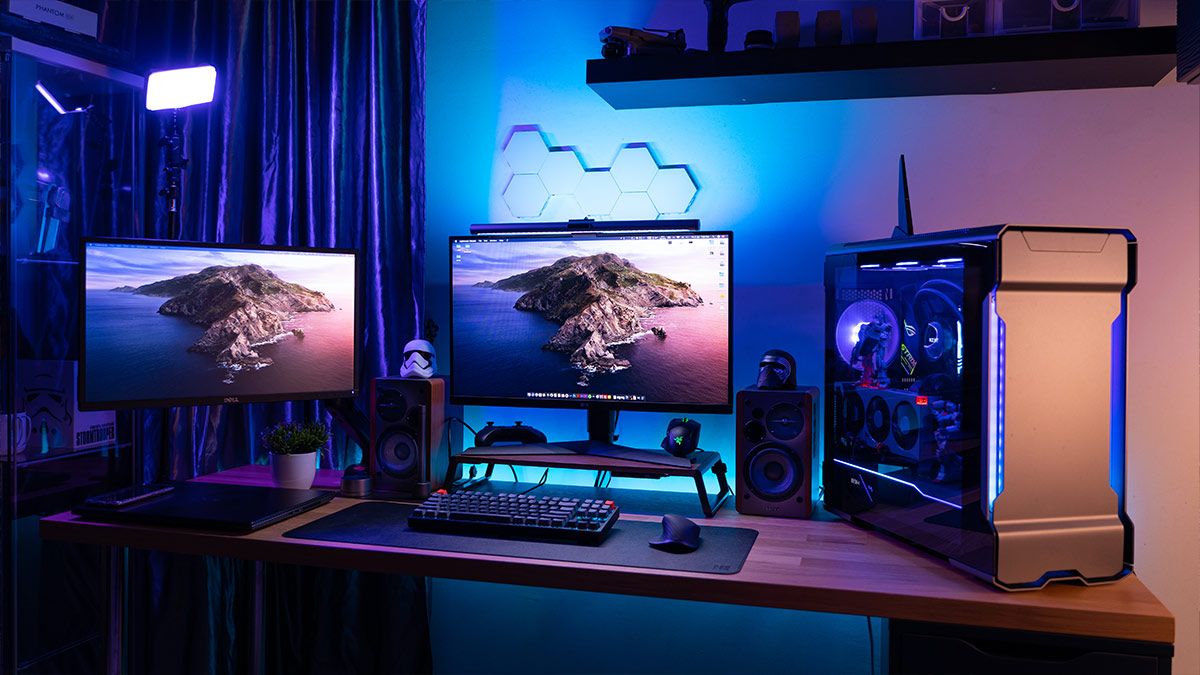
Related
Bad Wi-Fi Signal on Your PC? Do This to Fix It
If you’re using Wi-Fi on your computer, this trick will help boost your signal.
The chipset, however, doesn’t affect these. This means that you won’t be taking away any bandwidth from your graphics card, capture card, or any other PCIe device in your system when using a Wi-Fi card that’s run off the chipset.
And, of course, using a built-in Wi-Fi card means that you won’t lose a physical PCIe lane in your system. Some computers only come with two PCIe lanes to start with, meaning you’d have one for a graphics card and one more for anything else. If you want to use that PCIe lane for, say, an audio or capture card, then you can’t use it for a Wi-Fi card.
Limitations of Built-In Wi-Fi Cards
While there are many benefits to Wi-Fi cards, there are also a few drawbacks to consider.
While most built-in Wi-Fi cards can be upgraded, it’s not always a simple task. In fact, some motherboards require quite a bit of disassembly to get to that card slot — others don’t.
With the Wi-Fi card being part of the I/O shield on the back of your motherboard, there’s a good chance it’s also under a heat shield to help keep all the components nice and cool. This means that you’d have to fully remove that heat shield, which can sometimes mean having to re-do thermal paste or pads and deal with quite a few screws.
Other motherboards keep the Wi-Fi card nice and easy to access, requiring only the removal of a few screws to get to and no heat shield to go around.
Where Add-In Cards Still Shine
While I definitely recommend going with a built-in Wi-Fi card when possible, there are still some instances when an add-in card might be the best choice.
If you have a system that would require the removal of a whole mess of heat shields and shrouds to get to the Wi-Fi card, then maybe your best option is to use an add-in card instead. Modern computers can handle having multiple network interfaces fine, and you can disable your built-in card so that way the add-in Wi-Fi card is all that your computer will use.
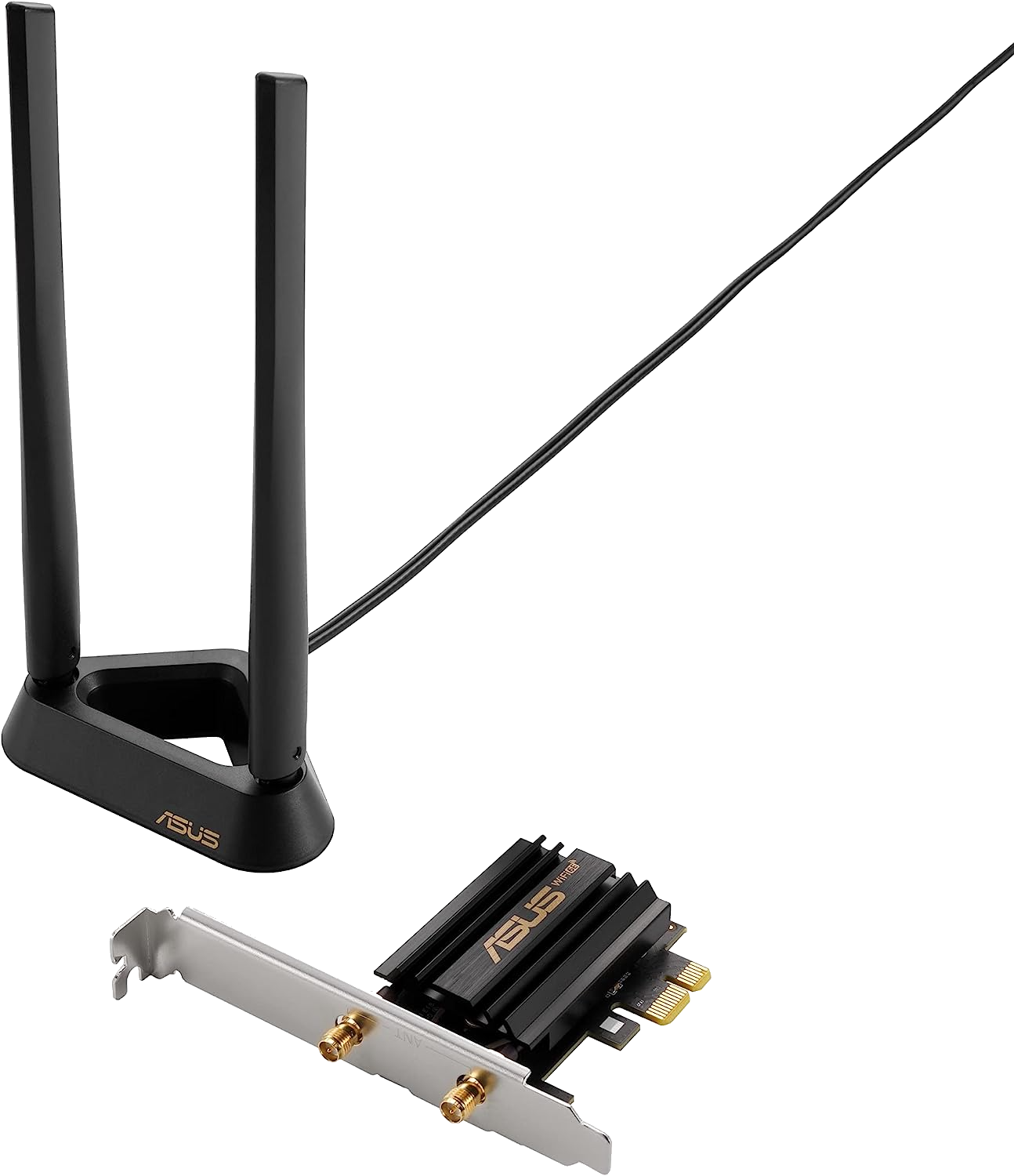
ASUS PCE-AXE58BT
$76 $80 Save
$4
An expensive but blazing-fast Wi-Fi 6E card with MU-MIMO, OFDMA, Bluetooth 5.2, portable base, and gold-plated antenna connectors.
Add-in cards are also great for upgrading older builds or systems that didn’t come with Wi-Fi to begin with. Whether you can’t upgrade your computer’s Wi-Fi card, or it simply just doesn’t have one, a PCIe add-in card is the most reliable way to bring wireless networking to a desktop.
Choosing the Right Option for Your Build
So, how do you pick which route to go?
I’d say, if you’re building or buying a system from scratch (and you have the extra cash to spring for it), get a motherboard or pre-built system that already has Wi-Fi built-in. This is the simplest way and means you won’t have to do any fiddling up front. It’ll just work and allow you to connect to a wireless network (or use Bluetooth) right away. And, in the future, you could swap the card out for another one if you need faster speeds.
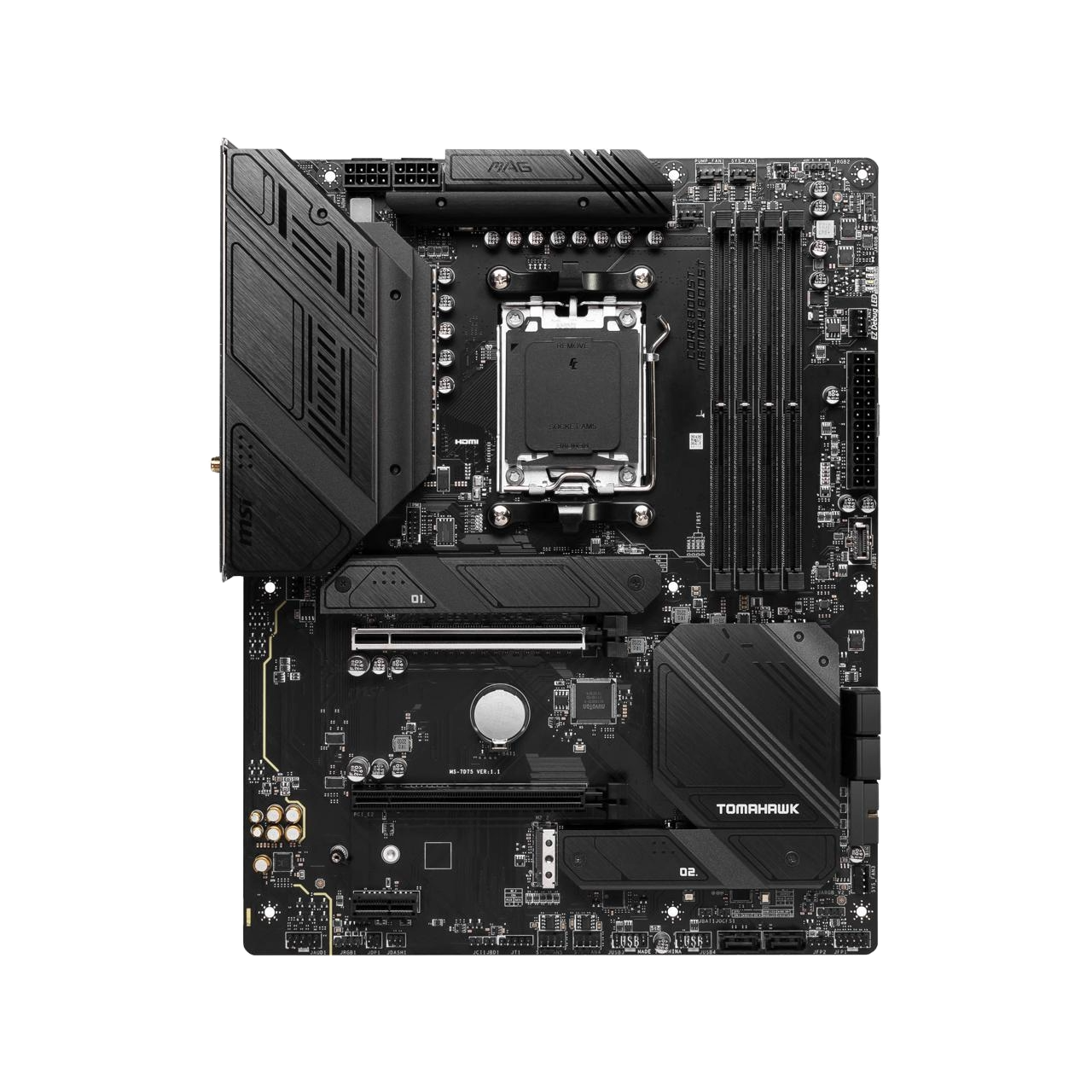
MSI MAG B650 Tomahawk WiFi Gaming
$200 $220 Save
$20
Excellent VRM, built-in Wi-Fi, a number of high-speed USB ports, an attractive design, and an unbeatable price make the MSI MAG B650 Tomahawk WiFi a killer mid-range AMD gaming motherboard.
However, if you don’t want to spend the money upfront, or you honestly don’t think you’ll ever need Wi-Fi or Bluetooth on your system, then skip it and kick the purchase down the road some. In the future, you could always pick up an add-in card (given you have a spare PCIe lane) and enjoy wireless networking at that time.
Wondering whether wireless networking is worth it at all? We dove into the comparison between wired and wireless networking to show you the pros and cons of both, ensuring you make the best decision for your personal setup.


